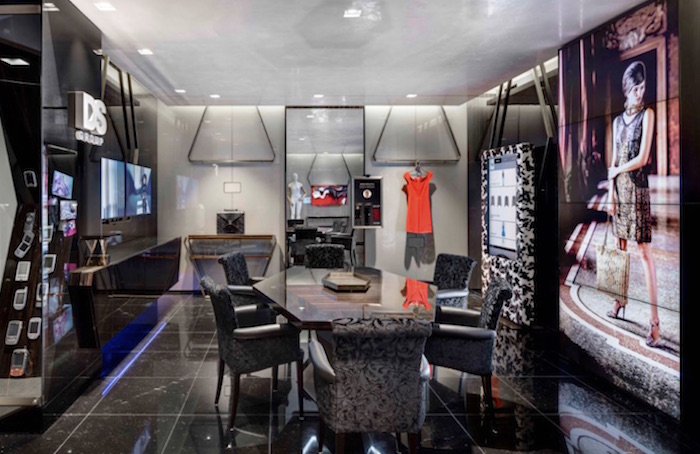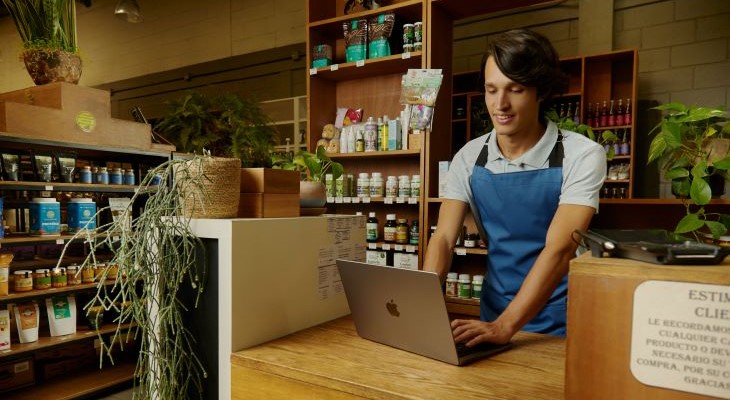Arriva la boutique digitale per i brand della moda e del lusso, insieme opportunità di competitività e di crescita e possibilità per i clienti di accedere a un’esperienza di acquisto coinvolgente grazie all’interazione tra internet e il punto vendita atraverso dispositivi smart.
A lanciare la soluzione omnichannel è DS Group, azienda italiana di consulenza ICT specializzata nella progettazione e nello sviluppo di soluzioni applicative mobile multipiattaforma e multidevice; fra le aree di maggiore focalizzazione per DS Group vi è la Digital Retail Experience, in cui ha affiancato nei percorsi di innovazione e di digital transformation marchi prestigiosi come Valentino, Calzedonia, Luxottica, Pinko.
Sulla base di tali esperienze nel retail e grazie a un ecosistema di partner leader di mercato come Samsung Electronics, Microsoft, SAP, Intel, Ingenico, Motorola, DS Group ha creato la Digital Boutique, spazio tecnologico basato sull’integrazione fra dinamiche proprie del retail e tecnologie digitali che oggi è possibile visitare presso la sua sede milanese. Un centro di eccellenza sul modello di negozio innovativo che DS Group sta progettando insieme ai propri clienti.
Centrale è il ruolo dei partner tecnologici che hanno partecipato al processo creativo e di sviluppo, operando con il team di DS Group; la Digital Boutique è quindi dotata delle migliori tecnologie per un modello di Multichannel Retail Experience di avanguardia. In particolare, Samsung Electronics ha fornito schermi LFD, videowall, soluzioni di digital signage e tablet per la cura degli aspetti tecnologici visuali; Microsoft, oltre a fornire i tablet Surface Pro 3 e gli smartphone Lumia 1520 e 830, ospita ed eroga l’intera piattaforma tecnologica attraverso la propria piattaforma cloud Azure; Intel ha supportato il progetto fornendo le tecnologie innovative in grado di migliorare la relazione con il cliente (soluzioni di digital signage) e per la gestione e l’analisi dei dati di mobile payment (dispositivi NUC – Next Unit of Computing). Sap Mobile Platform ha permesso di gestire soluzioni di mobilità su larga scala, basandosi sull’integrazione della migliore tecnologia mobile Sap in un’unica soluzione end-to-end.
Il layout e l’estetica di questo spazio sono stati realizzati dal designer Alessandro Luciani con i canoni di una boutique di lusso per struttura e stile; lo showroom di Milano propone quindi un percorso fisico ed emozionale attraverso le tecnologie digitali, seguendo le tappe che portano a una nuova esperienza d’acquisto.
Le tappe del tour tecnologico nella Digital Boutique
Cuore di tutta la struttura è Combenia, piattaforma che DS Group ha sviluppato specificamente per il retail per integrare le diverse tecnologie; ogni tecnologia supporta una tappa specifica dell’esperienza di acquisto.
1 – Si parte da riconoscimento e mappatura (Store Analytics and Virtual Check-In) del cliente che entra nel negozio: attraverso tecnologie di rilevazione fra cui telecamere, beacon e wi-fi, mappa gli ingressi della persona e la permanenza nello store e ne individua le caratteristiche principali (può essere usata anche fuori dalla vetrina per quantificare le presenze dei passanti nei diversi momenti della giornata); permette quindi di identificare e profilare il consumatore e attuare comunicazioni personalizzate.
2 – Seconda tappa, Interactive Digital Signage: un grande schermo, per mezzo di una web cam incorporata, proietta video e contenuti personalizzati proponendo outfit diversi a seconda del sesso e della fascia d’età della persona.
3 – Hybrid Shop Experience con tavoli e totem touch interattivi che permettono al consumatore l’e-shop direttamente nello store: mentre prova un capo, può selezionare ulteriori misure e colori da catalogo e ordinare modelli non disponibili in negozio, con consegna successiva a casa o altra destinazione;
4 – Smart Dressing Room: il camerino multimediale che, all’ingresso del cliente, effettua la rilevazione dei capi muniti di tag in transito, consentendo alla marca di effettuare statistiche tra il provato e il venduto e profilare le preferenze delle persone; inoltre, può raccogliere feedback sull’abito provato attraverso lo specchio touch screen interattivo che, adeguandosi alle scelte del cliente comunicate con un ‘tap’, propone altri outfit o prodotti;
5 – Mobile Payment: i dispositivi mobili dedicati al pagamento, fra cui il Mobile Pos, che, sempre mantenendo massima sicurezza, smaterializzano il punto cassa eliminando le code e le attese e garantendo flessibilità e comodità.
Ogni momento della customer experience è disponibile e governato da un dispositivo mobile in dotazione allo store manager e allo staff in store, messo quindi nelle condizioni di mappare e seguire il cliente in tutte le fasi dell’esperienza di acquisto, fornendo da un lato un servizio a valore per il consumatore, dall’altro raccogliendo dati preziosi per l’analytics/intelligence dello store e del brand.







